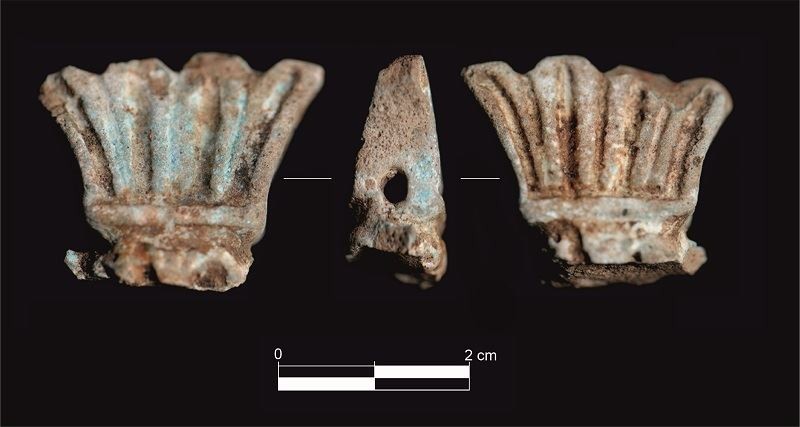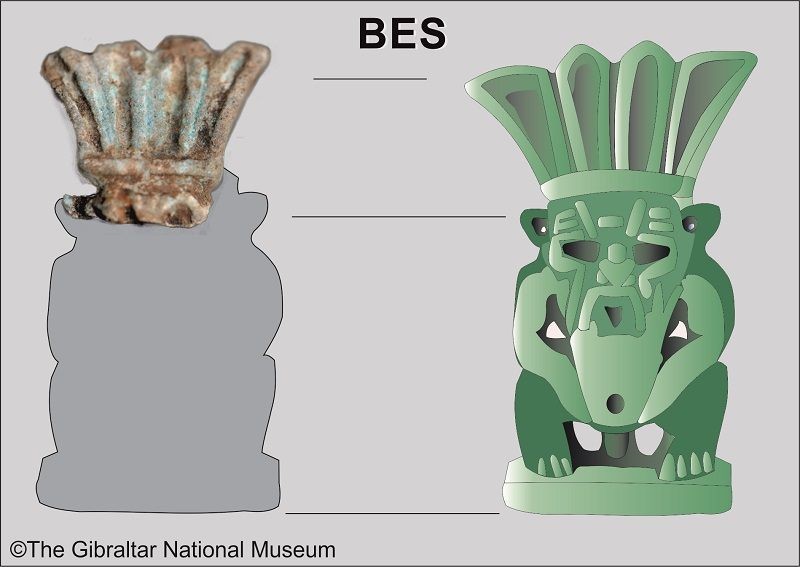Statuette fragment of the deity Bes

Fragment of a statuette of the deity Bes from Gorham's Cave, depicting a crown of feathers.

Digital reconstruction of the statuette from Gorham's Cave representing the deity Bes.
Statuette fragment of the deity Bes
The ancient Phoenician-Punic shrine at Gorham’s Cave stands out for its remarkable assemblage of amulets, including the large number of scarabs recorded in this one cave. Among these offerings, which were meant to afford magical protection, stands out a faience ceramic fragment identified by the feathered crown of a representation of the deity Bes. It corresponds with the archaic phase of the shrine between the 9th and 6th century BCE.
The item is likely Egyptian in origin, with Bes having formed part of the pantheon of Ancient Egyptian deities whose veneration would later expand across the Mediterranean.
Bes was one of the main deities purported to have magical protective powers. Grotesque in appearance, he was a protective genie of pregnant women, childbirth and new-borns; he protected marriage and the home, and took care of aspects relating to love and fertility. He was also god of cosmetics and feminine decorations. For men, he served a protective function against evil influences, snakes and monsters – in this respect it was common for Bes to be represented as a figurehead on Egyptian ships as protector of navigators.
This dwarf god is depicted naked, usually with large genitals, big head with a beard and flat nose. He would sometimes be depicted wearing a crown of vertical ostrich feathers, as is the case in this piece.
Published: April 22, 2020
Other similar VM - Archaeology
18-20 Bomb House Lane
PO Box 939,
Gibraltar
